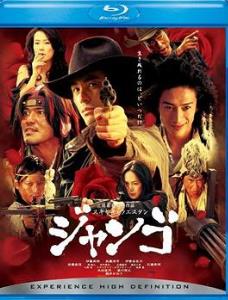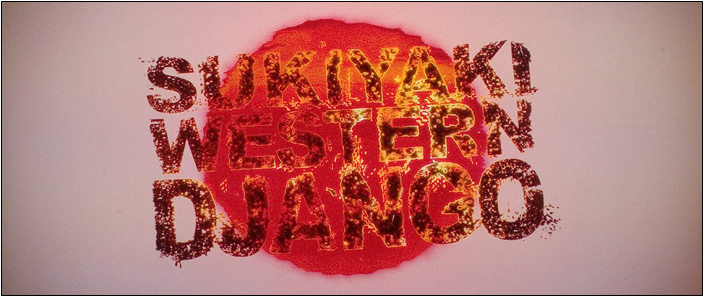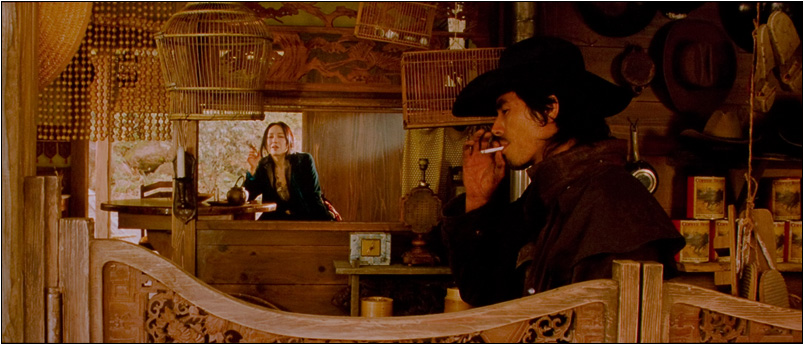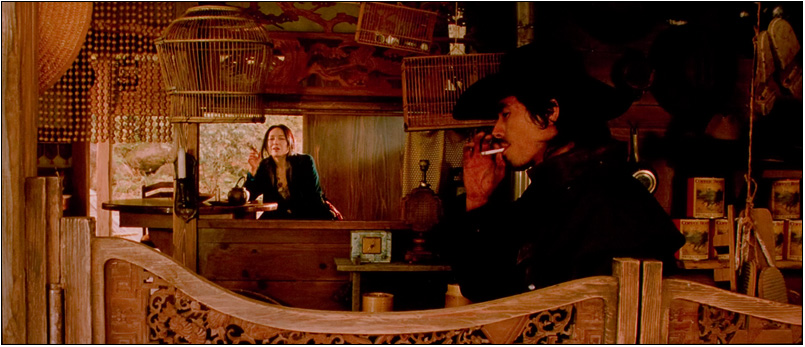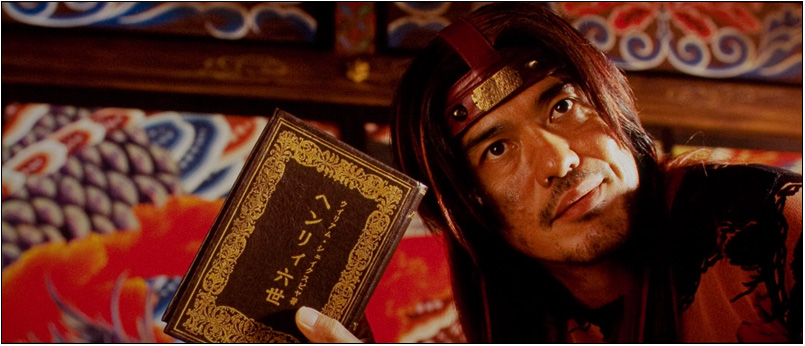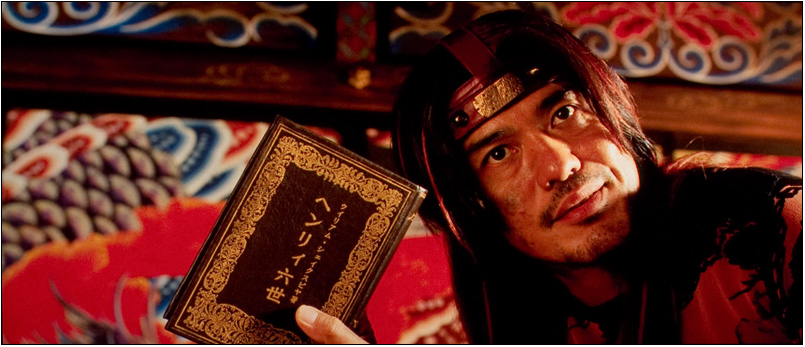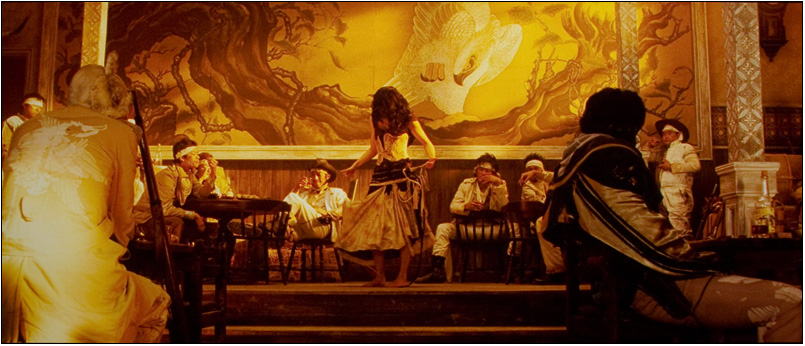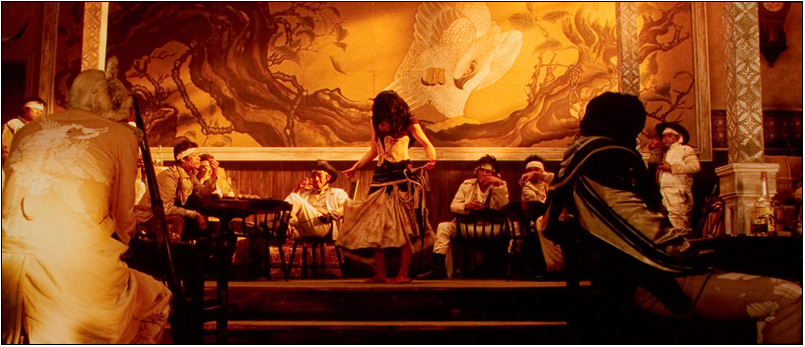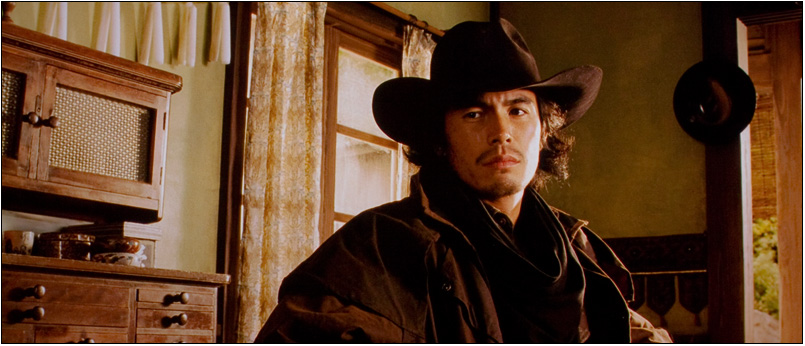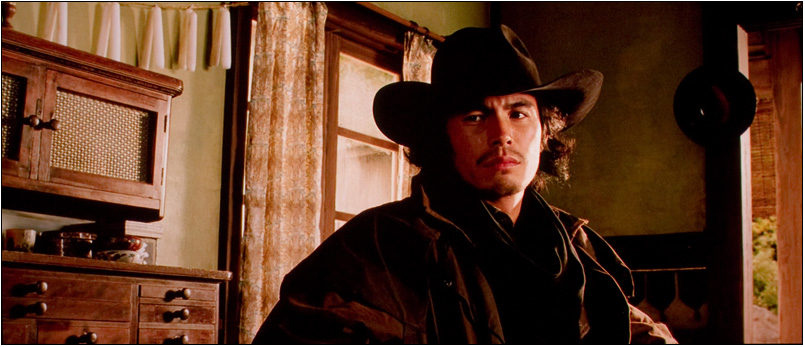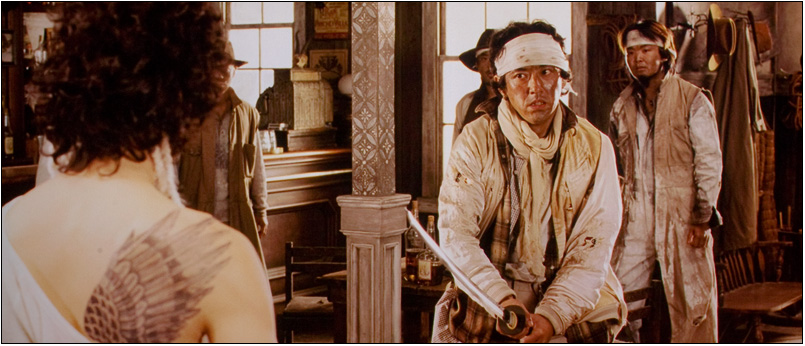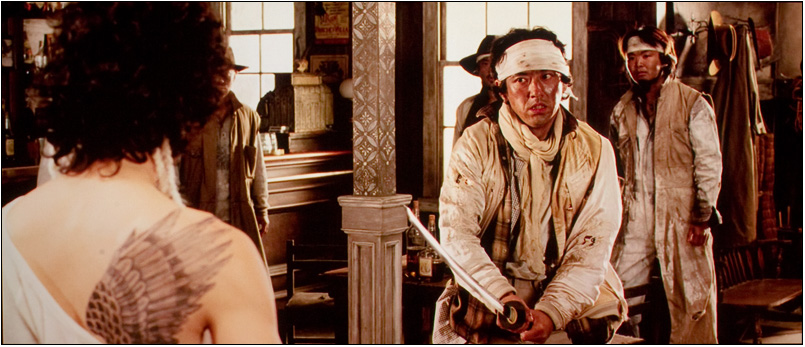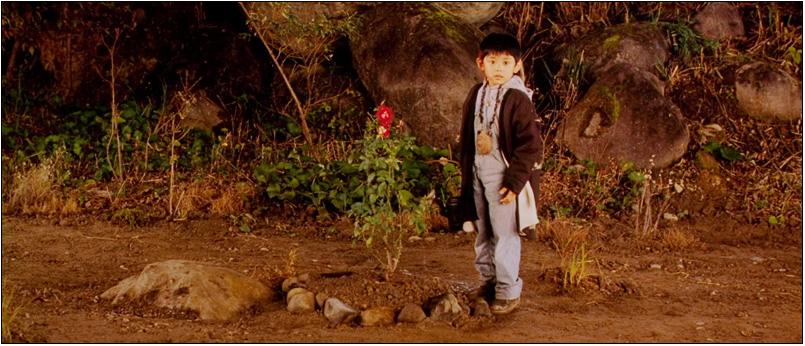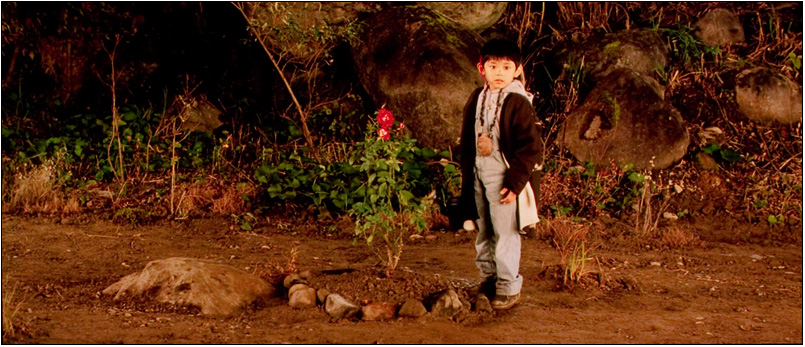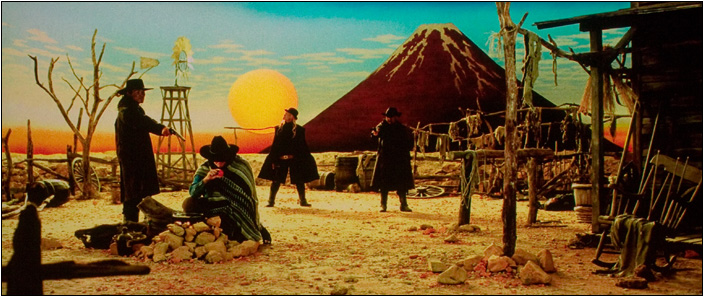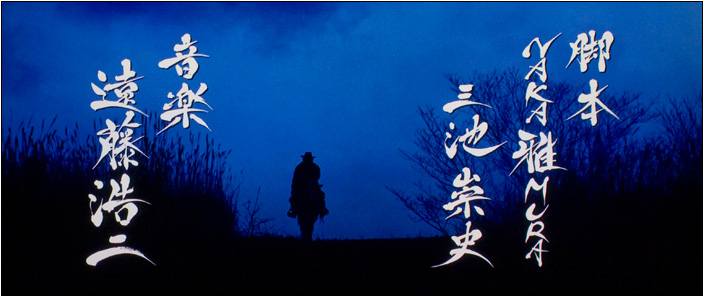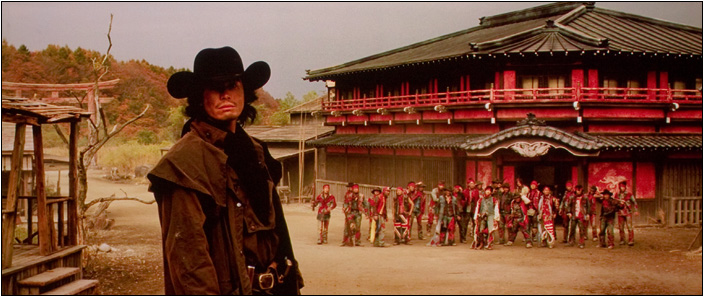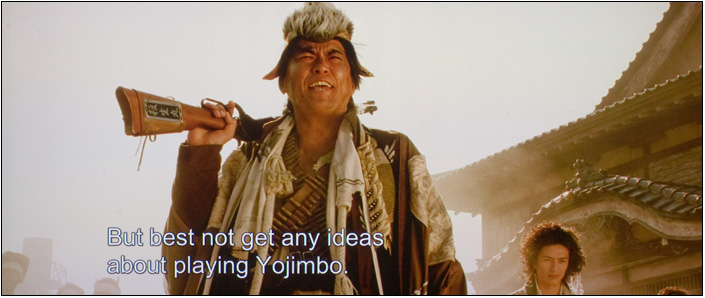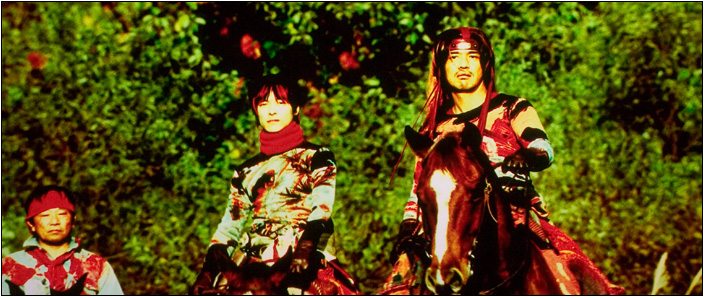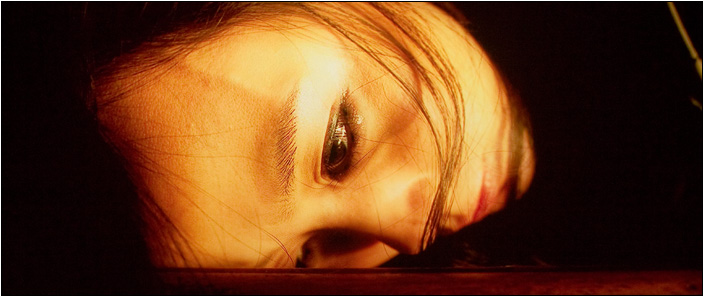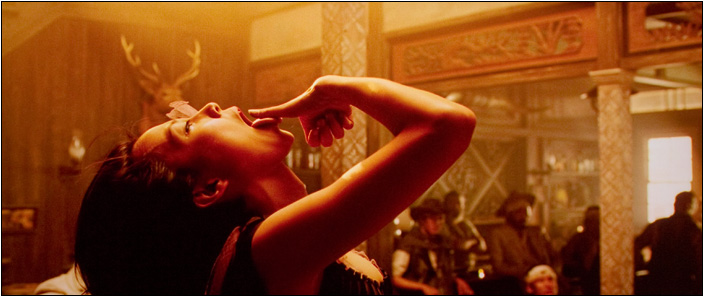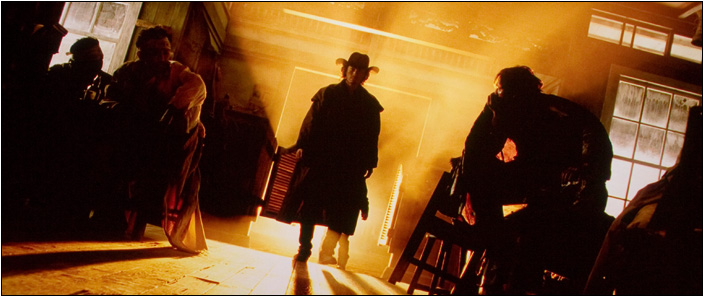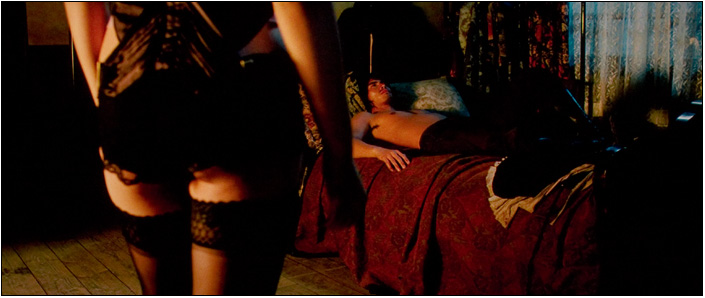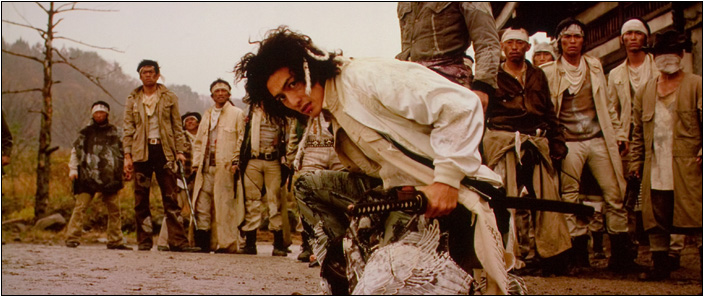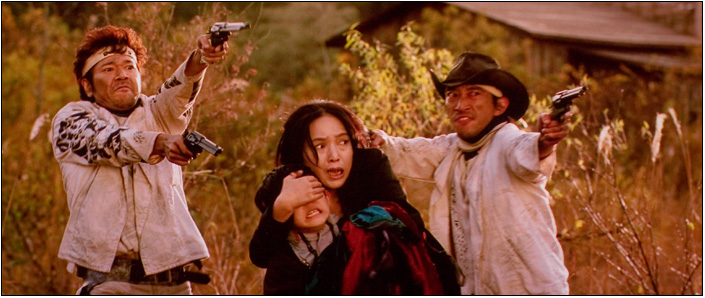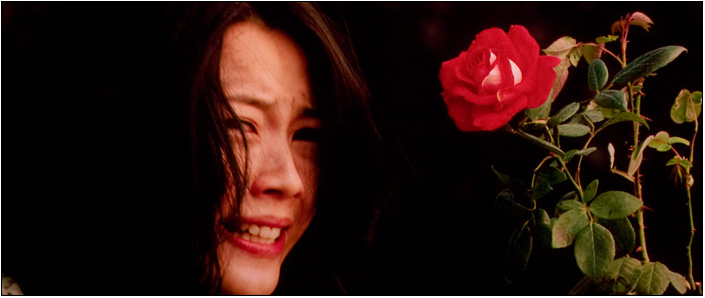|
Sukiyaki Western Django [Blu-ray]
(Takashi Miike, 2007)
Review by Leonard Norwitz
Studio:
Theatrical: Sedic International, Geneon Entertainment & Sony
Pictures
Blu-ray: First Look Studios
Disc:
Region: A
Runtime: 98 minutes
Chapters: 12
Size: 25 GB
Case: Standard Amaray Blu-ray case
Release date: November 11th, 2008
Video:
Aspect ratio: 2.35:1
Resolution: 1080p
Video codec: VC-1
Audio:
English Dolby TrueHD; English 5.1 Dolby Digital
Subtitles:
English SDH & Spanish (feature film). Burned-in English on
Documentary
Extras:
• Documentary: Making of Sukiyaki Western Django (52:40)
• 6 Deleted Scenes (14:28)
• Promotional Theatrical Previews
• Digital Copy Disc
• BD LIve
The Film:
One of the most anticipated Asian imports in recent times,
Sukiyaki Western Django is about to see the light of
day in the West on Blu-ray. First Look Studios, who will
have released the indie thriller
Transsiberian the week before, gets the honors. The
Blu-ray edition of Sukiyaki Western Django will
include a Digital Copy disc and BD Live capability. One
thing, though: This is the shorter version that I understand
from my First Look Studios rep was cut by the director for
the U.S. market. The Japanese Blu-ray edition is 23 minutes
longer.
The Movie : 7
For the two or three of you out there who are not up on your
Japanese cult action flix, here's a brief rundown:
Sukiyaki Western Django is the brainchild of Takashi
Miike (Ichi the Killer,
City of Lost Souls,
The Bird People
in China). The first things we notice about it – in rapid
succession – are the highly stylized production design,
especially as regards color and light; the fact that, except
for the exceedingly bizarre presence of Quentin Tarantino,
the cast is Japanese, all of whom are speaking English – and
rather badly at that; and its resemblance to Kurasawa's
Yojimbo and Sergio Corbucci's 1996
Django.
The movie begs cryptic descriptions, and I imagine just
about every reviewer has tried their hand. So, in that
spirit of overstatement, I think it's fair to say that
Sukiyaki Western Django represents the triumph of style over
substance and, even with
Yojimbo
(or
Django
– take your
pick) to hang its story on, of style over plot. The movie
simply reeks camp. Hardly a moment or a line goes by that
doesn't refer to some pop culture scene, line, or attitude:
from Akira to Shakespeare, to Lord of the Rings to
Once Upon
a Time in the West to Apocalypse Now to Batman. Which isn't
to say that it doesn’t have moments of sincerity, though
many will find them hard to respond to in all the
distractions. Sukiyaki Western Django's very
self-consciousness, underscored by dialogue that reads – and
sounds – like a bad translation from the original Japanese
is what makes it so funny. In fact, I found it necessary to
watch the movie with subtitles. It's like What's Up Tiger
Lily? turned on its head and inside out. The bloody action
sequences make Tarantino's Crazy 88's seem like children
playing in the sandbox. It's all such a weird mix of real
and comic book. I shall say no more.
Image:
7/8
The first number indicates a relative level of excellence
compared to other Blu-ray video discs on a ten-point scale.
The second number places this image along the full range of
DVD and Blu-ray discs.
One could say that color and light is what this movie is all
about. If you've seen Masaki Kobayashi's Kwaidan, then you
will recall Hoichi the Earless who recites the saga of the
Battle of Dan-No-Ura between the Genji and the Heike. It is
that battle, as depicted by Kobayashi, that Miike takes his
cue from and melds its participants into the Yojimbo plot
some 500 years later. In Miike's hands, the image is often
drastically altered and processed (especially in flashbacks)
that any attempt at guessing the original intention is
pointless. Without a copy of Sony's original Japanese
Blu-ray for comparison, I wouldn't begin to able to sort out
whether the appearance of what looks like grain is the
product of processing or of the rendering into Blu-ray –
just to take one example. And that's where this review runs
up against a wall, I'm afraid. I have only this copy, though
I intend to correct that – so look for an update in a couple
weeks.
We can make some useful observations, however: First Look
opted for a single-layer presentation. I have seen
unconfirmed reports that Sony's is dual layered. The bit
rates for First Look tend to the high teens with forays into
the low 20s, which I feel is problematic for a movie that
relies on image for its effect. That said, the image is, at
all times, clear and without blemishes. I'm guessing that
artifacts are not present, but the movie is post-processed
to such a degree that it may not matter. Much of the time
the image is deliberately oversaturated with light values
blown all to hell in very high contrast. Again, I'm guessing
these are the filmmakers' decisions and only they would be
able to tell if First Look has managed to realize the
intentions properly, given the medium and the source
elements.
Update: Comparison to Japanese Sony Blu-ray:
While sensible people will make their decision based on
price and buy the Japanese because it is more expensive, and
some will decide based on country of origin and therefore
buy the First Look since everyone speaks English, there will
be others who wait for reviews such as this, only to come
away more confused and will simply toss a coin.
The question of length may turn out to be definitive. The
Sony is 23 minutes longer, none of which felt to me as
filler. There are no new subplots, simply a fleshing out of
the competitors. The U.S. cut focuses more on the lone
gunman, the Japanese doesn't. The beginnings and endings are
the same.
The Sony bumps up the audio to 6.1 Dolby TrueHD and adds a
Japanese dub, also a 6.1 Dolby TrueHD. I have to say that
watching this movie with the Japanese dub results in another
level of linguistic hysteria: There is no serious attempt at
matching phrase lengths, so the dub looks as much like a dub
as it sounds, and the very idea of non-English actors
speaking Engrish and then dubbing a translation into
Japanese – well, words fail me. (Thoughts of Victor/Victoria
come to mind.) I will say – and this is another one of those
annoying bits that don't quite fit – the dub track sounds
better than any of the others, not by much, but it has more
of everything we want in an audio track. In any case I
didn't hear enough difference between the First Look English
5.1 and Sony 6.1 mixes to comment on.
Which brings us to the question of image. As anticipated,
the bit rates on the AVC MPEG-4 Japanese edition (vs. AVC
for the American) are considerably greater. On very
different content I measured 16.8 vs. 33.4, 14.0/38.3,
17.9/33.2 and 18.0/35.5 on the First Look and Sony
respectively. I had the impression that the image was denser
but my crops of full size images do not confirm this (so
they are not included as caps). I also measured the aspect
ratios: the First Look came in at 2.34:1, the Sony at
2.32:1, yet the U.S. edition yielded a little more
information top and bottom (though no more at the sides).
This suggests that either the Sony extends things vertically
or the American shortens them, but neither case is apparent
while watching the film.
The most noticeable difference lies in black levels and
color cast. The First Look is consistently redder and
blacker. The Sony permits us to see much further into the
image. Its textures have a corresponding reality, whether
they be leather, canvas, felt, horsehide, skin, even wood
and dirt. Tarantino's hat in the opening shot has texture,
rather than merely a filled surface. Perhaps this was not
the intention of the filmmaker, though it certainly made for
a more agreeable watch. Here's a thought: It is entirely
possible – even likely – that the First Look Blu-ray does
resemble the way the film appeared in U.S. theatres and the
Sony looks the way it appeared to Tokyo audiences.
Japanese Sony Blu-ray
TOP vs. U.S. First Look Blu-ray
BOTTOM
Japanese Sony Blu-ray
TOP vs. U.S. First Look Blu-ray
BOTTOM
Japanese Sony Blu-ray
TOP vs. U.S. First Look Blu-ray
BOTTOM
Japanese Sony Blu-ray
TOP vs. U.S. First Look Blu-ray
BOTTOM
Japanese Sony Blu-ray
TOP vs. U.S. First Look Blu-ray
BOTTOM
Japanese Sony Blu-ray
TOP vs. U.S. First Look Blu-ray
BOTTOM
More from the First Look
Blu-ray
Audio & Music:
7/7
The Japanese Blu-ray sported a Dolby TrueHD 6.1 mix, where
First Look is 5.1. The surround track is engaged with music
and effects, and does a good job with both. With the volume
turned up to theatrical levels, the effect is sufficiently
immersive, though I can't say that I was completely taken
in. This may have been largely the result of seeing this
movie for the first time and being so tossed about by plot,
language and image that I couldn't absorb it all.
Operations:
3
The menu, though similar to First Look's
Transsiberian, is
easier to use, but it lacks creativity or understanding of
the potential of the medium. That's not a bad thing, only
just not much fun. Again, we are confronted with promos in
SD that reappear as Extra Feature trailers and, again, they
are offered without comment as to eventual availability on
Blu-ay. My one big complaint is that none of the Japanese
credits at the beginning or end are translated.
Extras:
6
First Look gives Sukiyaki Western Django the illusion of a
red carpet treatment, but stops short of offering the
Making-of documentary in HD. At least it does provide
(burned in) English subtitles, as it is narrated in
Japanese. While there are no HD extras as such, we should
credit its having BD-Live capability. First Look has also
supplied a Digital Copy disc, which I can see being of some
value for many users. The six Deleted Scenes are all in
non-anamorphic widescreen 480p, and not very clear at that.
One of them, however, is aided by a second angle, running
concurrently.
|
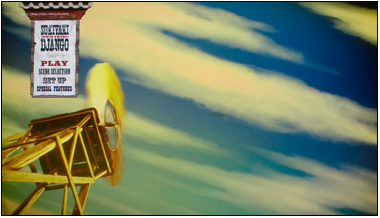 |
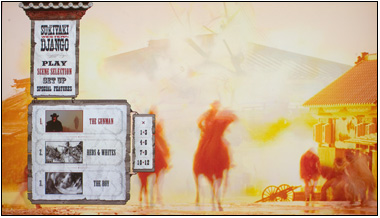 |
|
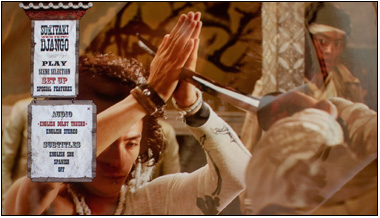 |
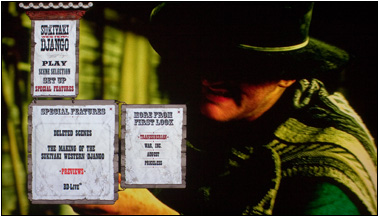 |
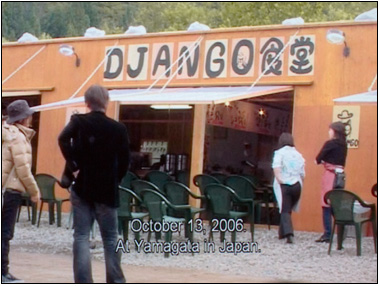 |
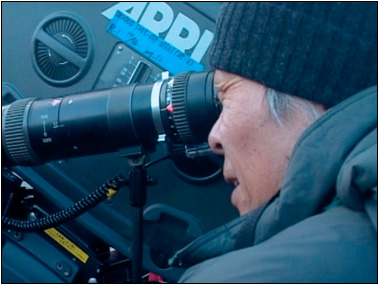 |
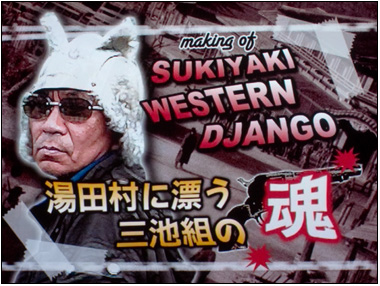 |
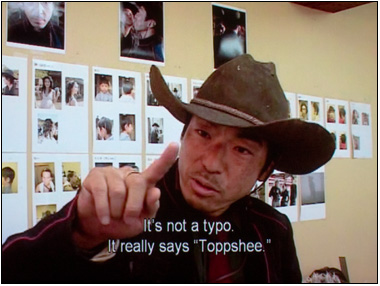 |
Bottom line:
6
Despite the possibility that First Look's image may be
somewhat compromised as compared to the Japanese Sony, it
must be observed that it comes at a much lower price. (YesAsia
currently offers the Sony for $47.99, while
Amazon sells the
new U.S. edition for $22.95.) I would strongly urge First
Look to give serious consideration to dual layer and
uncompressed audio tracks for any movie longer than 90
minutes. In any case, to do whatever it takes to keep bit
rates in the 30s. As mentioned earlier, I will update this
review after obtaining the Japanese edition.
So: a good, but probably not definitive transfer and very
good audio plus a digital copy disc at a low price. But the
question of the missing 20+ minutes remains. Despite the cut
and the skimpy extra features, it's hard to pass this up.
Unless, of course, this movie is not your cup of sukiyaki.
Leonard Norwitz
October 31st, 2008
UPDATE: November 8th, 2008
|
![]()
![]()

![]()
![]()
![]()
![]()

![]()
![]()

